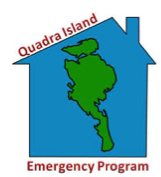Heat Safety


Extreme Heat
Stay on top of extreme heat advisories and learn about heat-related illness symptoms, prevention, and treatment.
Extreme Heat
Extreme heat events occur when uncommon high temperatures are experienced for at least two consecutive days. During extreme heat events, you are at higher risk of heat-related illness.
For current heat advisories in place for Vancouver Island, please visit the Environment and Climate Change Canada (ECCC) website.
Too much heat can be harmful to your health and, in severe cases, can lead to heat stroke (sunstroke), which can be life threatening. Heat stroke is a medical emergency – call 911 if you or a person you are caring for has high body temperature, confusion and/or is unconscious.
Symptoms, Prevention & Treatment
The impact of heat-related illness varies from person to person based on your genetics, your age and your body’s ability to adapt to heat. Everyone is at risk of heat-related illness but the following people are at higher risk:
Older adults
People with chronic conditions including heart and respiratory disease
People who live alone or are socially isolated
Infants and young children
People who exercise or work outdoors
People on certain medications (Consult with your pharmacist)
Marginalized populations
Symptoms
Symptoms of heat-related illness can range from mild to severe, including:
Pale, cool, moist skin Heavy sweating
Fatigue and weakness Dizziness and/or fainting
Headache Muscle cramps
Rash Swelling, especially hands and feet
Rapid breathing and heart rate Extreme thirst
Nausea and/or vomiting Fever, greater than 40C
Hallucinations Confusion and decreased mental alertness
Red, hot, dry skin Seizures
Unconsciousness/coma
Prevention
Never leave children or pets alone in a parked car. Leaving the car windows slightly open will not keep the inside of the vehicle at a safe temperature.
Drink plenty of non-alcoholic fluids even before you feel thirsty.
Avoid tiring work or exercise in hot, humid environments. If you must work or exercise outside, drink 2 to 4 glasses of non-alcoholic fluids each hour. Take breaks from the heat in shaded environments.
Keep cool. Stay indoors in air-conditioned buildings, or take a cool bath or shower. At temperatures above 30C, fans alone may not prevent heat-related illness. If your house is too hot, consider going somewhere cooler.
Regularly check on older adults, children and others for signs of heat-related illness and make sure they are seeing cool and drinking plenty of fluids. Check on those who are unable to leave their homes and people with emotional or mental health concerns whose judgment may be impaired.
Avoid outdoor activity during the hottest times of the day. Plan your outdoor activity before 11 a.m. or after 4 p.m.
Wear lightweight clothing that is light-coloured, loose fitting and breathable. Wear a wide-brimmed hat or use an umbrella for shade.
Limit sun exposure and avoid sunburn – use sunscreen with SPF 30 or higher. Remember, sunscreen will protect you from sunburn, but not from the heat.
Take shelter from extreme heat. Seeking shelter from extreme heat helps to reduce your risk of heat-related illness. If possible, seek shelter that has a functional air conditioning system.
Treatment
When recognized early, most mild heat-related illnesses can be treated at home. Home treatment for mild heat exhaustion may include:
Move to a cooler and shaded environment
Drink plenty of cool, non-alcoholic fluids even before you feel thirsty
Take a cool shower, bath or apply a cool cloth on the skin
Rest
Wear lightweight clothing
If symptoms last longer than one hour, get worse or cause concern, contact your health-care provider. Heat stroke is a medical emergency – call 911 if you or a person you are caring for has high body temperature, confusion and/or is unconscious. If possible, move the person to a cool, shaded environment and apply cool water to the skin until help arrives.
HealthLink BC. To learn more, click here
Click Here to return to Home Page